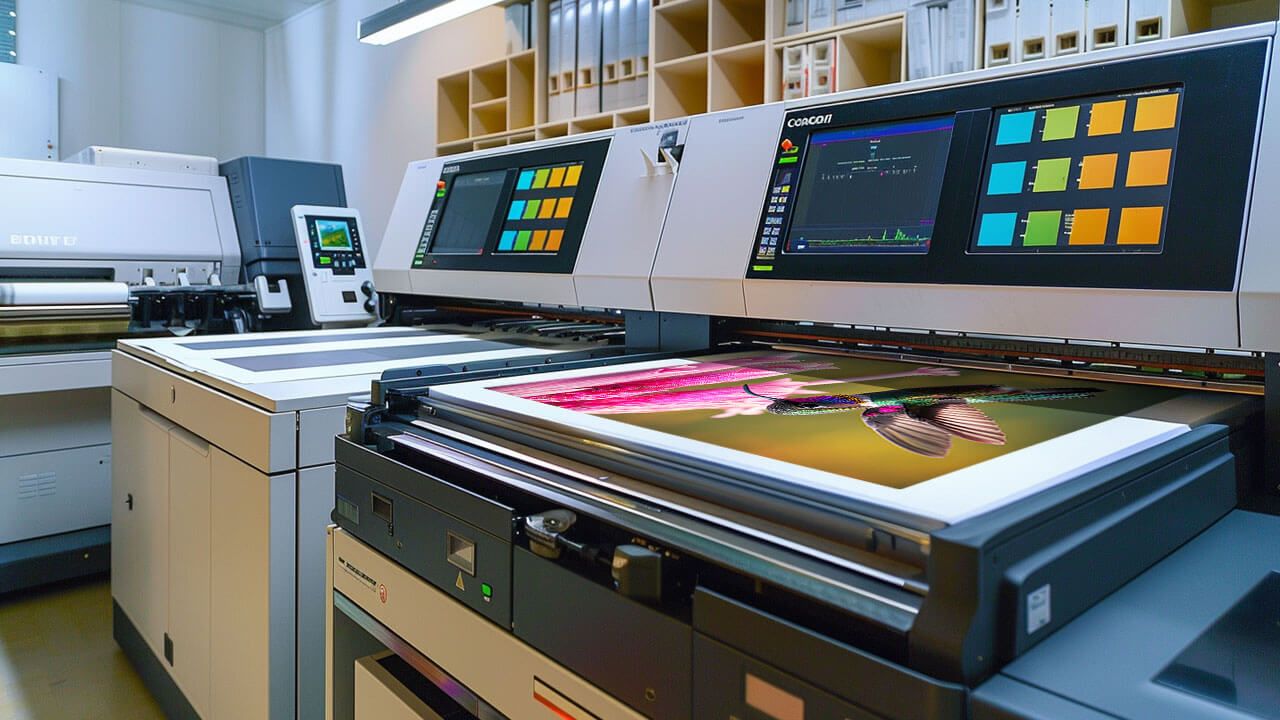In recent years, the intersection of the print industry and Industry 4.0 has become a topic of significant interest. As the world evolves, so does the way businesses operate, especially within the printing sector. The print industry, traditionally seen as static, is now experiencing a transformation influenced by the innovative principles of Industry 4.0. This transformation is not just a trend; it’s a revolution that is reshaping the future of printing.

Understanding Industry 4.0
Before delving into how Industry 4.0 impacts the print sector, it’s essential to understand what Industry 4.0 entails. Often referred to as the fourth industrial revolution, Industry 4.0 represents the digital transformation of manufacturing and production industries. It encompasses the integration of advanced technologies like the Internet of Things (IoT), artificial intelligence (AI), and data analytics.
The Core Technologies of Industry 4.0
Key technologies driving Industry 4.0 include:
- Internet of Things (IoT): IoT connects devices and systems, allowing seamless communication and data sharing.
- Artificial Intelligence (AI): AI enables machines to perform tasks that typically require human intelligence.
- Data Analytics: Advanced data analytics help in processing vast amounts of information, leading to informed decision-making.
The Impact of Industry 4.0 on the Print Industry
The print industry is not immune to the changes brought by Industry 4.0. Here’s how this revolution is impacting printing businesses:
Automation and Efficiency
One of the most significant effects of Industry 4.0 on the print industry is automation. Printing processes that were once manual are now automated, leading to increased efficiency and reduced errors. This shift allows printing companies to deliver high-quality products faster and more reliably.
Customization and Personalization
With the help of data analytics and AI, printing companies can offer customized and personalized products. Whether it’s packaging, marketing materials, or publishing, personalization is becoming a standard expectation from customers.
Sustainability and Eco-Friendliness
Another area where Industry 4.0 is making a significant impact is sustainability. By leveraging technology, printing companies are minimizing waste and reducing their carbon footprint. For more on sustainable printing practices, visit biodegradable materials.
Challenges Facing the Print Industry
While the integration of Industry 4.0 technologies offers numerous benefits, it also presents challenges. The adoption of new technologies requires substantial investment and a shift in company culture and workforce skills.
Investment in Technology
Implementing Industry 4.0 technologies requires significant financial investment. Companies need to purchase new equipment, train staff, and possibly restructure their operations.
Workforce Transformation
The shift towards automation and AI necessitates a change in workforce skills. Employees need to be trained to work alongside advanced technologies, and there may be a demand for new roles within the industry.
Opportunities for Marketing Professionals
For marketing professionals, the changes in the print industry present unique opportunities. The ability to offer personalized marketing materials and leverage data analytics for targeted campaigns can significantly enhance marketing efforts.
Enhanced Customer Engagement
Industry 4.0 technologies allow marketers to engage with customers more effectively. By utilizing data insights, marketing professionals can create targeted campaigns that resonate with their audience.
Innovative Marketing Solutions
The integration of augmented reality (AR) in print media is an example of an innovative solution arising from Industry 4.0. To explore more about AR in print media, visit AR in Print Media.
The Future of the Print Industry
As Industry 4.0 continues to evolve, the future of the print industry looks promising. The adoption of 3D printing, for example, is set to revolutionize manufacturing processes. For insights into 3D printing advancements, check out 3D Printing in Manufacturing.
Emerging Trends
Emerging trends such as digital printing, smart packaging, and AI-driven design are set to redefine the industry. These technologies will not only enhance efficiency but also open new avenues for creativity and innovation.
Conclusion
The intersection of the print industry and Industry 4.0 is ushering in a new era of possibilities. While challenges exist, the benefits of adopting Industry 4.0 technologies far outweigh the drawbacks. As the industry continues to embrace these changes, businesses that adapt will thrive in this dynamic environment.

FAQs
What is Industry 4.0?
Industry 4.0 is the fourth industrial revolution, focusing on digital transformation through technologies like IoT, AI, and data analytics.
How is Industry 4.0 impacting the print industry?
Industry 4.0 is transforming the print industry by enhancing automation, customization, and sustainability.
What are the challenges of adopting Industry 4.0 in printing?
Challenges include the need for technological investment and workforce transformation to align with new technologies.
This article contains affiliate links. We may earn a commission at no extra cost to you.






